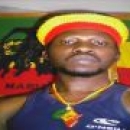
SD
iam from bongo of south sudan bongo is my tribe
The Name
Bongo is the name by which they refer to themselves: 'ge Bongo' or ‘we are Bongo,’ and this translates to ‘men’ in the generic sense.
Demography and Geography
The bulk of the Bongo population of a few thousand households lives in Tonj district although small groups are found living close to the Jo-Luo, the Balanda in Wau district in Bahr el Ghazal. The Bongo population had diminished in the 19th century to the point of near extinction as a result of Azande raids and Arab slavers.
Environment, Economic Activities and Natural Resources
Bongo-land marks the southern borders of ironstone belt of Bahr el Ghazal, an environment that has greatly influenced the social and economic life of the Bongo. The economy is predominantly subsistence agriculture mixed with keeping of domestic animals, iron smelting and production of iron-ware. They also engage in fishing and hunting.
Mythology and History
Tradition is that some three or four centuries ago there were a series of invasions from the northwest by the Madi, Bangba, Barambo and others.
These peoples swept over the basin of the Ulelle in a series of waves driving other peoples before them in all directions and creating, in consequence, an appalling ethnic confusion on the west bank of the Nile. Thus, for example, the Moro were cut off from their relatives the Madi and Lugbwara by the Azande invasions.
Language
All the Bongo speak the same language ‘bongo’ which is related linguistically to the Baka, Mittu, Beli, Sopi, Namusa, Moro Kodo, Moro Wadi, Biti, Wira, and possibly other languages to the south and east of Bongo country. It is not intelligible to the people of these tribes, but the words for common things are similar.
Society, Social Events and Traditions
The Bongo, as a people, are almost on the verge of extinction. The remnants of the nationality are not in a position to regenerate the Bongo society as it was before the slave trade. However, the few Bongo found in Tonj and Wau practice some of their social values and traditions.
Marriage
The number of a man’s wives seems to be limited to a maximum of three. The usual dowry for a young girl would be about 10 plates of iron weighing two pounds each, and 20 lance tips. In the case of divorce, the father is compelled to make restitution of at least a portion of the bride price. If a man should send his wife back to her father, she is at liberty to marry again.
If her husband retains the children, her father is bound to refund the entire wedding gift that he received, however if many years had elapsed since the marriage. Woman’s barrenness is always grounds for divorce. In cases of adultery the husband endeavours to kill the seducer, and the wife gets a sound flogging. A circumcised man cannot hope to make a good match in Bongo society.
Death and Burial
The corpse is placed in a crouching position, with hands placed between the knees, and with the knees drawn up to chin. In this position it is bound with leaves and cord.
Political Organisation and Traditional Authority
The Bongo have no concept of a state. The chief is the highest political/administrative office of the Bongo. Each village simply had its chief, who on the virtue of superior wealth, exercised a certain authority over the rest of the inhabitants, and in some cases, had an additional prestige from his skill in the art of magic. The Bongo chiefs (nyeri) never had great executive authority, but rather they seem to have been men who were listened to in matters of law, and acted as leaders in inter-tribal feuds.
Bongo Spirituality and Beliefs
The Bongo are superstitious, practicing all kinds of witchcraft, sorcery and magic. The Bongo borrowed a witchcraft known as 'mapiang' from the Dinka. It so strong that it is said to have spread as far as Azande land.
Culture, Arts, Music, Literature and Handicraft
Bongo culture and social values are expressed in their songs, poetry, physical arts and dance and folklore which are largely oral. The Bongo make the best tomb totems from hard wood. The Bongo were advanced in the smelting of iron derived from the abundant lateritic soil. The iron products: axes, spears, hoes are traded with the neighbouring communities. The interaction with the modern forces has led to the destruction of this indigenous knowledge system. The Bongo are skilful wood carvers, a craft that endures to the present. They also give much attention to basketwork, strainers to filter beer, baskets for carrying things, basket-pots for fishing, basket-work walls of huts and bee-hives. The other crafts the Bongo manufacture are fish-nets, creels and snares, fishing-lines made from fibres of bast.
Neighbours and Foreign Relations
The Bongo neighbour the Dinka, whose incursion seemed to have cut off the Bongo from Biele and other related people to the south. They also neighbour the Jo-Luo, the Balanda Bviri and others to the west. The Arab slavers almost exterminated the Bongo, reducing their numbers to a few hundreds.
Latest Developments
The Bongo are on the fringes of society in South Sudan. Many of them have migrated to Wau and other parts of the Sudan with serious consequences to their culture and traditions.
Diaspora
Little is known of the Bongo in the Diaspora.
Reference
E. E. Evans-Pritchard, ‘The Bongo.’ Sudan Notes and Records Vol. XII, Part I. 1929
Seligman, C. G., and Seligman, B. Z., ‘Pagan Tribes of the Nilotic Sudan.’ George Routledge & Sons Ltd., London, 1932
Languages spoken by tribe Language